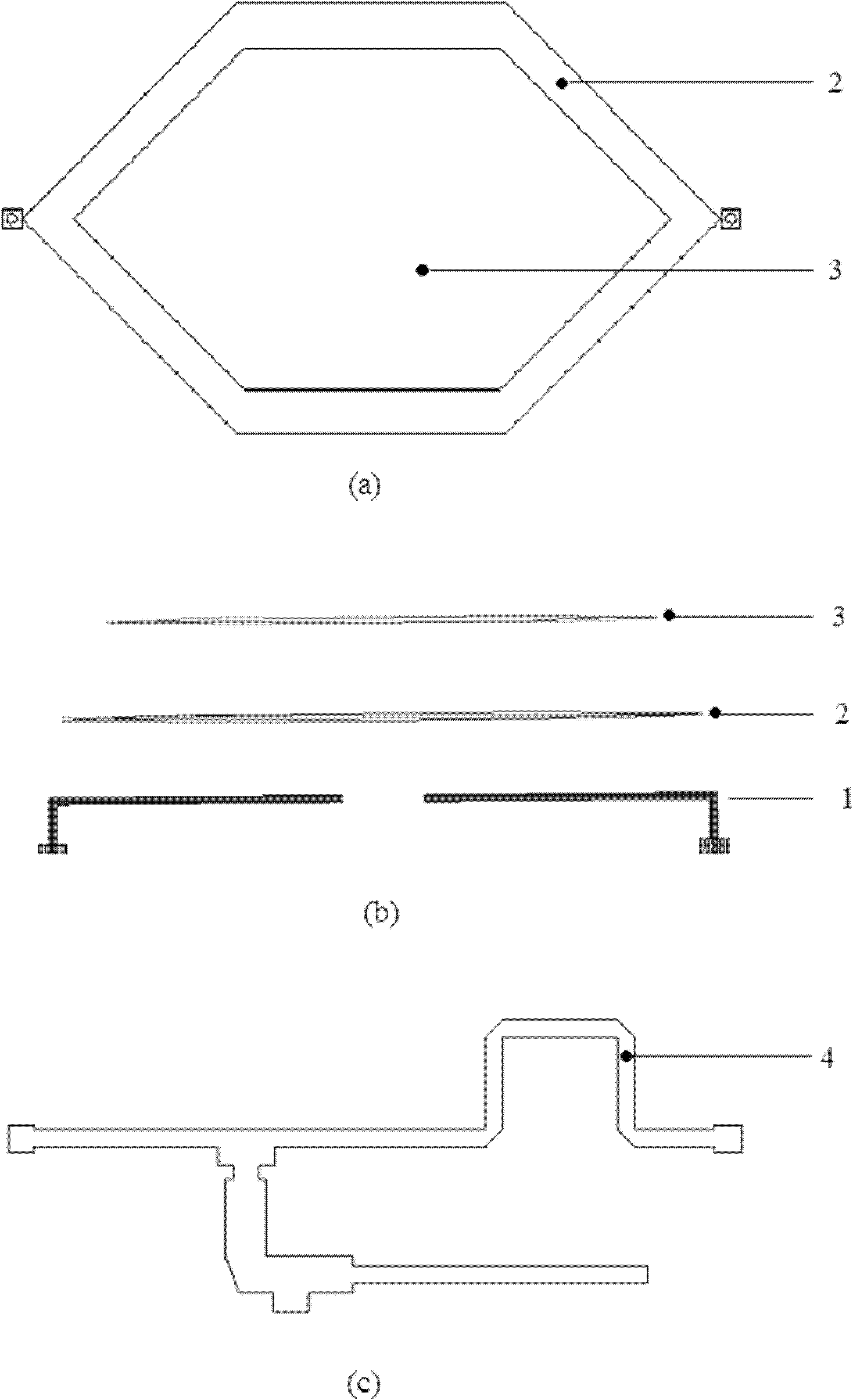Array antenna of wide-band and low-profile beam wireless communication base station
An array antenna and wireless communication technology, which is applied in the direction of the separately powered antenna array, the radiating element structure, etc., can solve the problems of low antenna efficiency, lack of array antenna, and difficulty in obtaining more accurate beam width, etc., to improve performance, Wide impedance characteristics, light weight effect
Inactive Publication Date: 2011-06-29
XINGDONG COMM TECH SUZHOU
View PDF4 Cites 7 Cited by
- Summary
- Abstract
- Description
- Claims
- Application Information
AI Technical Summary
Problems solved by technology
However, some array antennas cannot work in wireless communication systems such as GSM1800 (1710-1880MHz), CDMA1900 (1850-1990MHz) and ITU's IMT-2000 (1885-2170MHz); at the same time, because many array antennas do not have a symmetrical feeding structure, the antenna The efficiency is relatively low; in order to meet the technical specifications of the given azimuth beam width, people have done a lot of research on the form of the array unit and the shape of the reflector
However, most array antennas can only meet the technical specifications, and it is difficult to obtain a more accurate beamwidth in a wide operating frequency band
Method used
the structure of the environmentally friendly knitted fabric provided by the present invention; figure 2 Flow chart of the yarn wrapping machine for environmentally friendly knitted fabrics and storage devices; image 3 Is the parameter map of the yarn covering machine
View moreImage
Smart Image Click on the blue labels to locate them in the text.
Smart ImageViewing Examples
Examples
Experimental program
Comparison scheme
Effect test
Embodiment Construction
the structure of the environmentally friendly knitted fabric provided by the present invention; figure 2 Flow chart of the yarn wrapping machine for environmentally friendly knitted fabrics and storage devices; image 3 Is the parameter map of the yarn covering machine
Login to View More PUM
 Login to View More
Login to View More Abstract
The invention discloses an array antenna of a wide-band and low-profile beam wireless communication base station, which comprises an array unit of the array antenna. The array antenna of the wide-band and low-profile beam wireless communication base station is characterized in that: an excited radiating patch and a parasitic radiating patch of the array unit are both in a shape in which the middle is rectangular and two ends are conical; an L-shaped excitation probe below the excited radiating patch performs equal-amplitude and reverse-phase coupling feed on the two ends of the excited radiating patch; and a metal gap folded edge is arranged on a longitudinal side edge of a reflecting plate. The array antenna of the wide-band and low-profile beam wireless communication base station has wide impedance characteristics and low profile, and can obtain a more accurate beam width within a wide working band.
Description
A wide-band low-profile constant-beam wireless communication base station array antenna technical field The invention relates to a wireless communication base station array antenna. Specifically, it is a wireless communication base station array antenna with wide frequency band, low profile, and precise azimuth beam width. Background technique In order to meet the needs of wireless communication network optimization, wireless communication base station array antennas need to meet specific technical specifications, such as a given impedance bandwidth, high antenna efficiency, high front-to-back ratio of pattern, constant azimuth beamwidth, low profile, light weight etc. In order to meet the needs of different communication systems, many novel base station array antennas have been successfully developed and applied. However, some array antennas cannot work in wireless communication systems such as GSM1800 (1710-1880MHz), CDMA1900 (1850-1990MHz) and ITU's IMT-2000 (1885-217...
Claims
the structure of the environmentally friendly knitted fabric provided by the present invention; figure 2 Flow chart of the yarn wrapping machine for environmentally friendly knitted fabrics and storage devices; image 3 Is the parameter map of the yarn covering machine
Login to View More Application Information
Patent Timeline
 Login to View More
Login to View More IPC IPC(8): H01Q21/08H01Q1/38
Inventor 彭文峰何山红
Owner XINGDONG COMM TECH SUZHOU
Features
- R&D
- Intellectual Property
- Life Sciences
- Materials
- Tech Scout
Why Patsnap Eureka
- Unparalleled Data Quality
- Higher Quality Content
- 60% Fewer Hallucinations
Social media
Patsnap Eureka Blog
Learn More Browse by: Latest US Patents, China's latest patents, Technical Efficacy Thesaurus, Application Domain, Technology Topic, Popular Technical Reports.
© 2025 PatSnap. All rights reserved.Legal|Privacy policy|Modern Slavery Act Transparency Statement|Sitemap|About US| Contact US: help@patsnap.com



